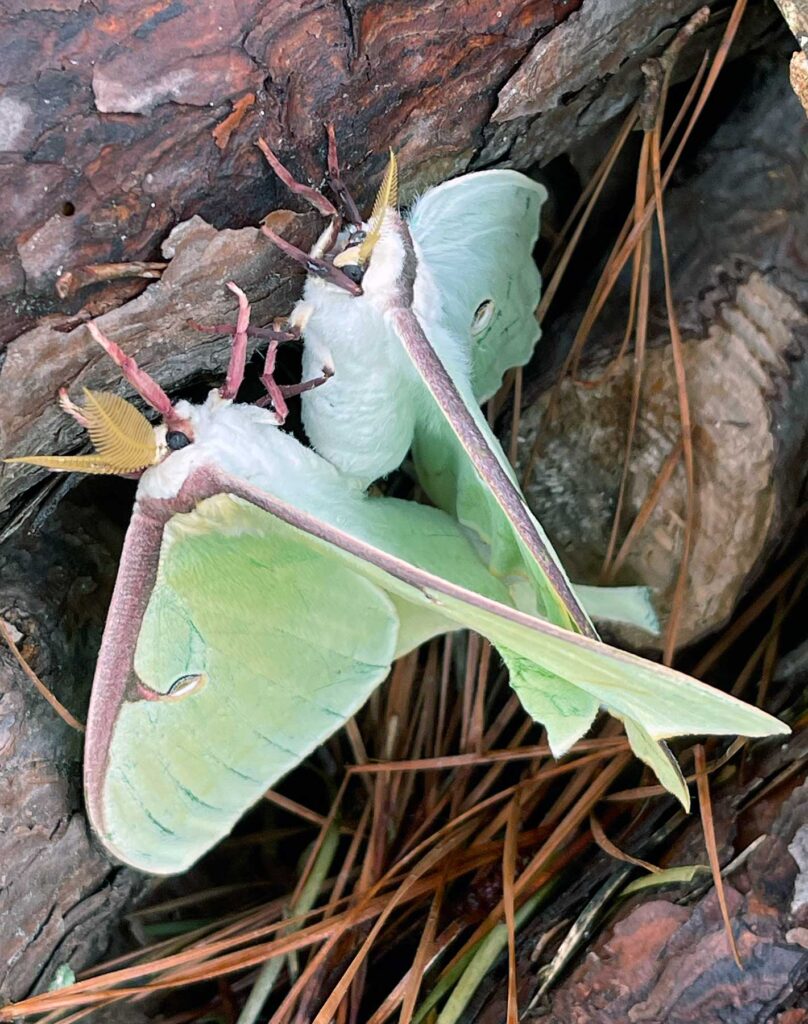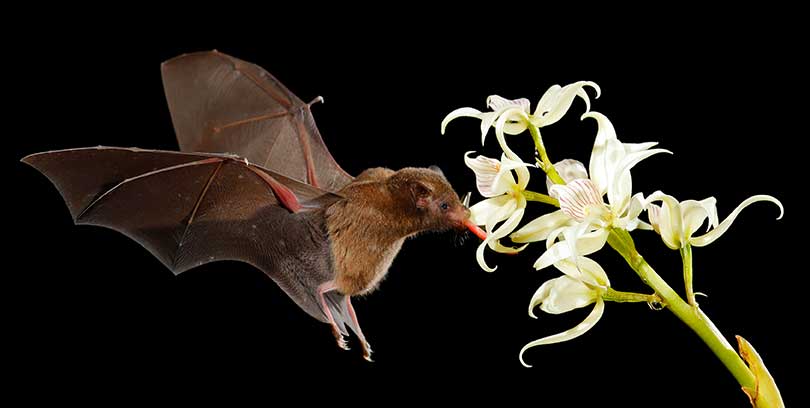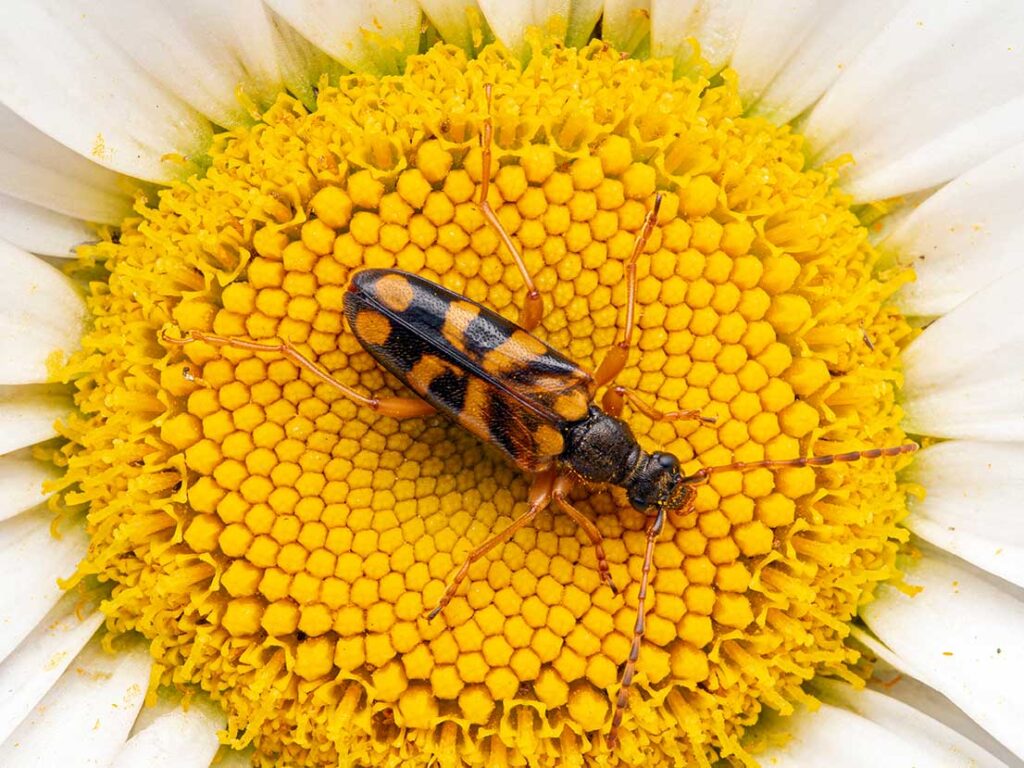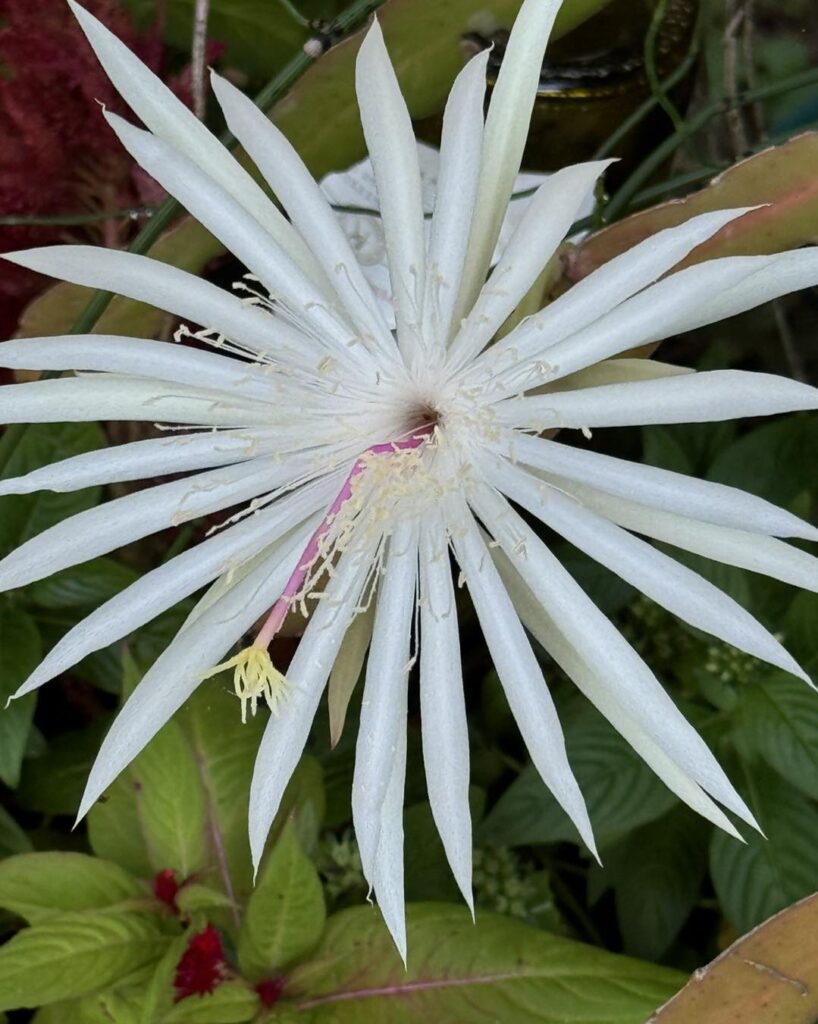During the day, I love watching the bees and butterflies fluttering from flower to flower in my garden. These are the insect pollinators we typically think of when planting pollinator gardens – the ones we see during daylight hours.
Did you know that once the sun goes down, another set of important pollinators goes to work? These are the night shift pollinators: moths, beetles, bats, and even some bees, cockroaches, crickets, and small mammals. The vital work of pollination doesn’t stop just because it’s dark outside.
Most flowers stay open after dark, and some plants only bloom after the sun goes down. According to the U.S. Fish and Wildlife Service, nocturnal pollinators do just as much pollinating as honeybees do (Source). Nocturnal insects or mammals pollinate one-third of plant species (Source).
What Are Some Nocturnal Pollinators?
Moths
There are over 11,000 species of moths in the U.S., ranging in size, shape, and color. Some of them are quite beautiful. While not all of these moth species are pollinators, moths are essential for the pollination of food crops and other plants.

Moths not only pollinate flowers faster than daytime pollinators, but they can also be more efficient at pollinating than most bees (Source). Moths even pollinate some flowers that bees don’t often visit.
When a moth pollinates a flower, it uncoils its long, furled-up proboscis (think tongue-like structure) and extends it deep into the flower to obtain nectar.
Some of our well-known moth pollinators include the hawk-wing moth, also known as the hummingbird moth, and the luna moth.
Moths are sometimes mistaken for butterflies, but there are some significant differences. Butterflies have hairless antennae that end in a club shape, whereas moths have feather antennae. Moths typically have a plump, fuzzy body, while butterflies’ bodies are slender and brightly colored. Learn more about how to tell a butterfly from a moth.
Bats
While most bats in the U.S. are insectivores (eat insects), there are pollinating bats in the southwestern U.S. In the tropics and deserts, many more bats help pollinate flowers.

Flowers that attract bats for pollination must be hardy enough to support the weight of the bat and also provide enough nectar for such a large pollinator! These flowers are often large, bell-shaped, and hang low on sturdy stalks. Bats use echolocation to find these large blooms. Bats are crucial for the reproduction of plants like the saguaro cactus and agave.
Beetles
Did you know that fireflies, also known as lightning bugs, are pollinators? Not only are they a joy to watch as they light up at night, but they’re busy at the work of pollination.
They’re just one of the beetles that assist in plant reproduction. Because there are so many beetles in the world, they are significant pollinators for specific plants. Also, beetles were among the very first insect pollinators. Beetles are important pollinators for magnolia tree species and spicebush.

While the flowers that attract moths are sweet-smelling, those that attract beetles have a less-than-pleasant odor. Beetle-pollinated flowers often smell musky, spicy, rotten, or decaying.
Beetles aren’t interested in nectar. They feed on pollen or other parts of the flower, capture other insects on the flower for food, hide from predators, and sometimes use the flowers for mating locations. As they climb around on the flowers, they get covered in pollen. When they visit another flower, the pollen from the previous visit is deposited in the new location (Source).
Plant-Pollinator Adaptations for Night Time Pollination
Some of these insects developed hand-in-hand with the plants they pollinate; the plants developed adaptations to attract their pollinators and the pollinators developed characteristics to assist in the pollination.

Plants that need night time pollinators have made some cool adaptations to attract them. For example, some flowers only open at night. These night-blooming flowers often have pale or white petals that reflect the light of the moon, making them easier to spot in dim light. These night-blooming flowers also put out a strong, sweet fragrance after sunset to draw pollinators in, sometimes from long distances.
In turn, the insects and mammals that pollinate in the dark have also adapted to better find their food source. Moths, in particular, have developed a strong sense of smell that allows them to find flowers even from long distances. Some beetles have developed specialized mouthparts to carry pollen (Source).
Some plant species are solely dependent on nocturnal pollinators for reproduction. These include saguaro cactus, agave, specific native orchids, magnolia trees, and yucca.
Factors Affecting Nocturnal Pollinator Populations
Unfortunately, these important insects are facing some big challenges. Just like daytime pollinators, they suffer from habitat loss, pesticides, diseases, and invasive species. Night time pollinators are also affected by light pollution.
Light Pollution
What is light pollution? Simply put, it’s artificial lighting used at night to illuminate the darkness. These lights can lure some nocturnal pollinators away from their food sources and potential mates. Think about all the moths and other insects you see flying around your front door light at night.
How to Help Nocturnal Pollinators
- Reduce light pollution by dimming or turning off your lights at night
- Leave leaf litter for nocturnal pollinators to use for overwintering or protection from predators
- Plant a night time pollinator garden including both food plants and host plants
- Avoid using pesticides that can harm pollinators
The next time you’re out enjoying the night, stop and take a moment to appreciate the hidden world of nocturnal pollinators. They’re essential to keeping our ecosystems thriving.
